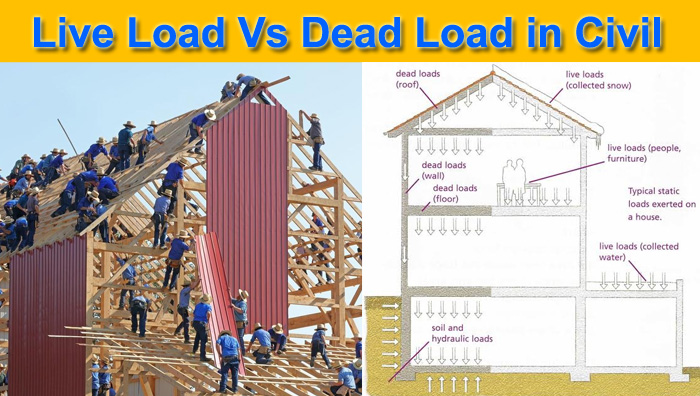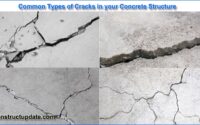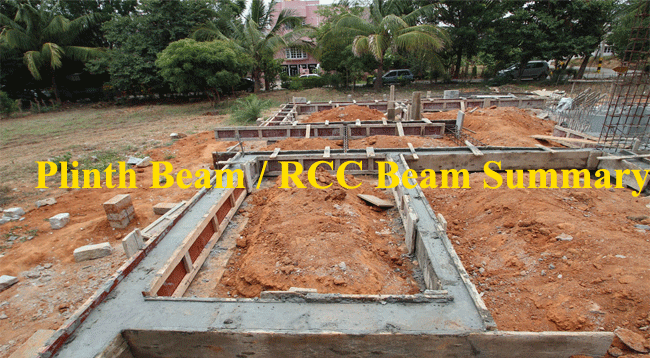Live Load Vs Dead Load in Civil | Live Load and Civil Load Differences
This article will guide you through Live load vs dead load in civil structure. Find what are the differences between live load and dead load in civil engineering.
Working on a structure entails a variety of loads, each with its own design, location, and other characteristics. The maximum load that a structure must be able to withstand is frequently defined in design standards.
The load is usually divided into two categories: dead load and live load. The weight of structural parts of a building, such as beams, walls, ceilings, and structural floors, are examples of dead loads, also known as permanent or static loads, that remain essentially constant over time. Component.

What is Live Load?
Variable or moving loads are the most common types of live loads. These can have a lot of movement and can include things like impact, momentum, vibration, fluid slosh dynamics, and so on.
The term “live load” refers to the occupational pressures generated by the occupancy and intended use of space. They are transient forces that might move through a structure or operate on a specific structural element.
These weights, which are also measured in PSF, include people’s estimated weights, furniture, appliances, automobiles, moveable equipment, and other such items.
According to ASCE criteria, living loads are assigned to building types based on occupancy and use categories.
Because structural strength is dependent on live load, knowing the specific intended usage of the building is critical. The amount of live weight it can handle is frequently determined by the amount of dead load it can handle.
Because of its immense compressive strength, reinforced concrete not only produces the highest load but also bears the most weight.
In multi-story buildings, structural steel has a low dead load and provides superior support for live loads. Natural and engineered wood is lighter than steel and concrete on the foundations, but they support a lower living load.
What is Dead Load?
Static forces that remain relatively steady for an extended period of time are known as dead loads. They might be in tension or compression at the same time. The phrase might relate to a laboratory test method or to how a material or building is used in everyday life.
In a nutshell, a structure’s deadweight is the total weight of the structure before it is put into use, which is commonly measured in pounds per square foot.
Static loads are created by floors, walls, ceilings, columns, stairwells, permanent appliances, and any fixed decoration that does not alter the life of the building.
Environmental Regulations:
The structural design of an edifice must also include other dynamic loads occurring on it before it can pass the standards.
Snow, soil movement, and seismic activity can all contribute to these environmental stresses. Naturally, seismic control standards in Colorado’s Front Range are lax, but excessive snow, wind, and soil conditions are an issue.
Vertical loads, horizontal loads, and longitudinal loads are the three types of loads. Dead loads, live loads, and impact loads are all examples of vertical loads.
Load Types in Civil Structures:
- Load applied
- Wind load
- Dead Weight
- Snow Weight
- Earthquake load
- Special load
Calculate the slab’s volume and multiply it by the density of the substance it’s made of.
If you’re working with a rectangular prismatic slab, for example, you’d double the thickness of the slab by the resulting temporal density (for concrete, it is 2200 to 2400 kg per cubic meter).
When you have mass, gravity multiplies it to give you weight, which is the dead load. Because this is a concentrated load, it should be spread across the slab’s surface.
It should be noted that the phase thickness of the field multiplication is unnecessary because you would divide it at the same value at the end, but I included it because I believe it is theoretically essential.




